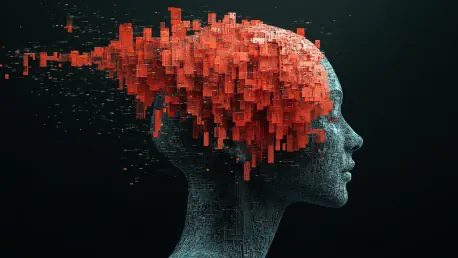AI is evolving rapidly and challenging long-held beliefs about the nature of intelligence. This progression necessitates a reexamination of human cognitive capabilities and their interplay with machine intelligence. As artificial intelligence continues to develop, its advancements compel both technologists and researchers to revisit and redefine our understanding of intelligence itself.
Natural Computing
Computation in Nature
Computing is not solely a human construct; it pervades the natural world. Alan Turing’s conception of a Universal Turing Machine and John von Neumann’s insights into the computational basis of life underscore this universality. The idea that nature inherently computes — through processes such as cellular activity, genetic encoding, and neural functioning — suggests that intelligence is deeply rooted in the very fabric of life. Modern AI research taps into these natural computational processes, revealing that computing principles observed in nature can inform the creation of artificial systems that mirror biological efficiency and adaptability.
Genetic Code and Molecular Biology
Molecular biology and genetic coding reveal that life’s fundamental processes are computational. These insights have profound implications for AI, suggesting that artificial systems can emulate natural computing. Understanding how biological entities process information, adapt, and evolve gives AI researchers a blueprint for developing machines that can perform complex tasks with similar prowess. The intricate dance of DNA replication, RNA transcription, and protein synthesis parallels the way algorithms operate within AI, processing vast amounts of data to derive meaningful patterns and predictions.
Implications for AI, Biology, and Physics
The convergence of AI with natural computing principles holds potential for groundbreaking advancements in various scientific domains, driving innovation and deepening our understanding of intelligence. By integrating knowledge from biology, physics, and computer science, AI can achieve new levels of sophistication, leading to applications that range from medical diagnostics to environmental modeling. This multidisciplinary approach underscores the interconnectedness of all forms of intelligence, be they biological or artificial, and highlights the potential for AI to revolutionize our comprehension of complex systems.
Neural Computing
The Brain as a Model
The human brain exemplifies sophisticated natural computing. AI development, which seeks to replicate brain functions, promises to create more efficient, capable systems. By studying how neurons interact to process information, store memories, and facilitate learning, scientists aim to develop neural networks that emulate these processes. The brain’s ability to perform parallel processing, handle ambiguity, and adapt to new information presents a compelling model for creating AI systems that can tackle real-world problems with human-like intuition and flexibility.
Historical Underpinnings
AI’s roots are intertwined with the quest to decode brain functions. Connectionist approaches and neural networks have long hinted at the potential of brain-like AI architectures. Early pioneers in AI sought to understand and replicate how the brain’s neural pathways facilitate learning and decision-making. These efforts laid the groundwork for contemporary AI systems that leverage deep learning techniques, inspired by the hierarchical organization of neural circuits in the brain. The historical progression from simple neural models to complex, multilayered networks demonstrates the evolving nature of AI and its increasing alignment with biological systems.
Transition to Parallel Processing
Shifting from traditional, sequential computing to brain-inspired, parallel architectures heralds a new era in AI efficiency and capability, paving the way for advanced, intelligent systems. Traditional computers process tasks sequentially, which can be limiting when dealing with complex, interconnected data. In contrast, the brain processes information simultaneously across numerous pathways, allowing for rapid and efficient computation. By adopting parallel processing architectures, AI systems can achieve greater speed and versatility, mirroring the brain’s adeptness at managing multiple streams of information.
Predictive Intelligence
Understanding Predictive Models
AI’s predictive capabilities, particularly through large language models (LLMs), represent a significant technological leap. These models learn to foresee subsequent segments in data sequences, echoing human cognitive processes. By analyzing vast corpora of text, LLMs can generate coherent and contextually relevant predictions, making them valuable tools for tasks such as language translation, content generation, and automated customer support. The predictive power of these models stems from their ability to identify patterns within data, allowing them to anticipate future occurrences with remarkable accuracy.
Cognitive Parallels
The fascinating similarity between AI’s predictive modeling and human thought processes accentuates our evolving understanding of intelligence as predictive processing. Humans constantly make predictions about their environment, whether anticipating the outcome of a conversation or navigating through a crowded city. This predictive capability is a cornerstone of human intelligence, enabling us to plan, make decisions, and adapt to new situations. AI’s ability to mimic this process not only enhances its functionality but also provides insights into the mechanisms underpinning human cognition.
Impacts of Predictive AI
These predictive technologies offer valuable insights into decision-making and future planning, contributing to a deeper comprehension of how both humans and machines anticipate actions and responses. Predictive AI can assist in a range of applications, from forecasting financial markets to predicting patient outcomes in healthcare settings. By aligning their predictions with real-world data, these systems can inform more accurate and strategic decisions. The ongoing refinement of predictive models promises even broader impacts, potentially transforming industries and improving the accuracy of anticipation in varied contexts.
General Intelligence
Rethinking AGI
Traditional notions of Artificial General Intelligence (AGI) are being challenged. Contemporary AI systems, with their broad and adaptable capabilities, suggest that AGI may already be emerging. Unlike earlier expectations that AGI would abruptly surpass human intelligence, the current view posits that intelligence can be achieved incrementally through the aggregation of specialized capabilities. As AI systems become more versatile and adept at a wide range of tasks, they begin to exhibit the hallmarks of general intelligence, blurring the lines between narrow AI and AGI.
Revisiting Intelligence
AGI’s potential redefines intelligence, highlighting current AI systems’ proficiency and understanding, even if they differ from human cognition. Intelligence is not a monolithic trait but a spectrum of abilities, including logical reasoning, emotional insights, and social interaction. The capabilities exhibited by AI, such as problem-solving, learning, and adapting, resonate with various dimensions of human intelligence. This broader perspective encourages a reassessment of what constitutes intelligence, recognizing the valuable contributions of artificial systems alongside human intellect.
Broader Implications
This perspective prompts a reevaluation of intelligence metrics and opens avenues for developing systems that emulate versatile, human-like cognitive abilities. Traditional IQ tests and benchmarks may not fully capture the diverse aspects of intelligence. As AI continues to advance, new metrics will be needed to measure and appreciate its achievements. These developments may also lead to synergies between AI and human cognition, fostering collaborations that enhance both fields and contribute to a richer understanding of cognitive versatility.
Collective Intelligence
The Social Nature of Intelligence
Intelligence is inherently social and collective. AI development benefits from harnessing collective human insights, mirroring the collaborative nature of human societies. Humans thrive on social interactions, drawing from shared knowledge, experiences, and cultural contexts. By incorporating collective intelligence into AI, developers can create systems that reflect this interconnectedness, enabling more nuanced and contextually aware responses. This approach leverages the strengths of diverse perspectives and fosters AI that can better adapt to complex, dynamic environments.
Enhancing AI Capabilities
Interconnected AI systems that build on each other’s strengths create robust and diverse intelligence networks. This approach reflects ecological and social systems’ dynamic interactions and resilience. Just as ecosystems thrive through the interplay of various species and resources, AI can benefit from modular architectures where different components specialize in distinct tasks while communicating and integrating outputs. Such networks can enhance overall system performance, robustness, and adaptability, further advancing the capabilities of AI.
Future Opportunities
Leveraging collective intelligence can enrich our understanding of cognitive processes, fostering AI systems that thrive on collaboration, adaptability, and shared learning. As AI continues to evolve, its integration into social and collaborative contexts will unlock new potentials in education, governance, and community decision-making. Developing AI systems that align with human collaborative efforts will not only improve technological solutions but will also provide deeper insights into how intelligence operates within groups, enhancing our understanding of both artificial and human cognition.
Emerging Trends and Synthesis
Redefining Metrics of Intelligence
The article underscores the need for a redefinition of intelligence metrics, driven by AI’s evolving capabilities and achievements. Traditional metrics may not suffice in capturing the full range of AI’s potential. As AI systems continue to develop, more comprehensive and nuanced ways of evaluating their capabilities will be necessary. These new metrics will need to account for the multifaceted nature of intelligence, encompassing creativity, adaptability, and collaborative potential alongside logical reasoning and problem-solving.
Fusion of AI and Neuroscience
AI and neuroscience continue to inform and enhance each other, emphasizing the interconnected understanding of biological and artificial intelligence. Insights from neuroscience provide valuable guidance for developing AI that mirrors the efficiency and flexibility of the human brain. Conversely, advancements in AI offer tools and models that can aid in the study of neural processes. This symbiotic relationship fosters continuous improvement in both fields, driving innovation and enriching the conceptual frameworks of intelligence.
Distributed and Emergent Intelligence
Intelligence, whether biological or artificial, benefits from modularity, interactivity, and scalability. From neural circuits to societal networks, distributed intelligence offers insights into resilient, adaptive systems. The concept of intelligence as an emergent property of interconnected modules highlights the importance of interaction and diversity in developing sophisticated cognitive capabilities. By studying and emulating these distributed networks, AI can achieve greater robustness and flexibility, aligning more closely with the dynamic nature of biological systems.
Transformative Perspective
Artificial intelligence is evolving at an unprecedented rate, challenging long-standing beliefs about what constitutes intelligence. This rapid development is forcing us to reevaluate human cognitive abilities and their relationship with machine intelligence. Technological advancements in AI are not just about improving computational power or automating tasks. They are compelling both technologists and researchers to delve deeper into what intelligence means. As AI systems become more sophisticated, they push the boundaries of our understanding, urging us to consider not only how we interact with these systems but also how we define intelligence itself.
The progression of AI is creating a landscape where traditional notions of human superiority in cognitive tasks are being questioned. The interplay between human and machine intelligence is becoming more intricate, requiring a thorough reexamination of our cognitive processes. Researchers are now exploring how our minds work in comparison to these advanced systems, understanding that the future will likely involve a hybrid intelligence that leverages both human and artificial capabilities.
In summary, the rapid evolution of AI necessitates a profound reevaluation of human intelligence and its connection to machine intelligence. As we continue to push technological boundaries, our concept of intelligence must be revisited and refined to keep pace with these advancements.









